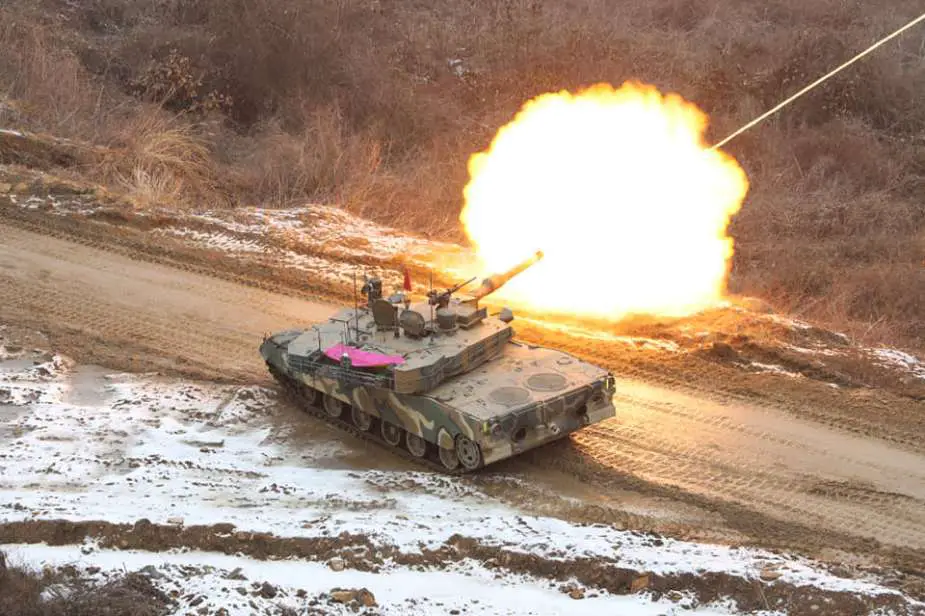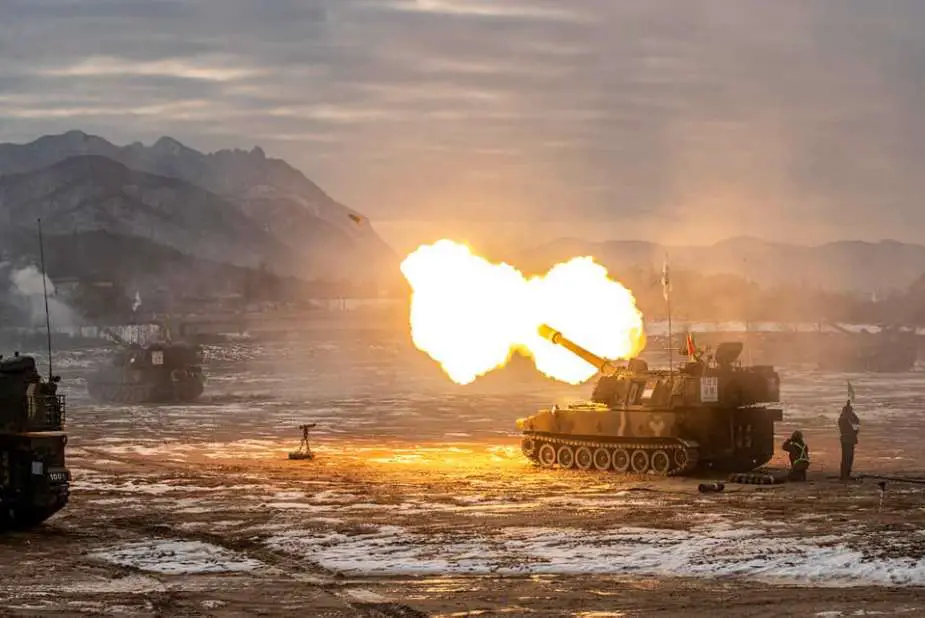Breaking news
South Korea responds to North Korean threats with large-scale military exercises.
On January 2nd, 2023, the South Korean Army (ROKA) conducted live-fire artillery and mechanized unit maneuver drills in response to concerns related to North Korean increasing threats. The exercises aimed to enhance readiness against potential provocations from North Korea in 2024, according to ROKA officials.
Follow Army Recognition on Google News at this link

Key vehicles for large-scale warfare, such as the K1A2 Main Battle Tank (MBT), were utilized during the exercises. (Picture source: Facebook/ROKA)
These drills took place near the Korean Demilitarized Zone (DMZ) and involved South Korean units, including the Capital Mechanized Infantry Division and the 2nd Quick Response Division. Key vehicles for large-scale warfare, such as K9 and K9A1 self-propelled howitzers, K1A2 and K2 Black Panther Main Battle Tanks (MBTs), K600 Rhino mine-clearing tanks, and K21 Infantry Fighting Vehicles (IFVs), were utilized during the exercises.
The training scenarios included responses to potential enemy artillery provocations, with troops practicing retaliatory artillery firing. Additionally, AH-64 Apache attack helicopters provided aerial support for ground troops, while mechanized units focused on rapid maneuvering.
The Army stated that the drills aimed to maintain a robust combat posture and readiness given the current security situation.
These exercises followed North Korean leader Kim Jong-un's recent declaration that inter-Korean relations were "between two states hostile to each other." He also called for increased preparations to "suppress the whole territory of South Korea" in a year-end ruling party meeting.
Simultaneously, South Korea and the United States jointly conducted live-fire exercises near the border with North Korea. These drills, which started on December 29, 2023, in the border city of Pocheon, aimed to enhance combined operational capabilities to address potential military threats from North Korea. Participating units included the South Korean Capital Mechanized Infantry Division and the US Stryker Brigade Combat Team from the 2nd Infantry Division. Various military assets, such as K1A2 Main Battle Tanks (MBTs), A-10 Thunderbolt close air support aircraft, Stryker and K200 armored personnel carriers (APCs), K600 Rhino mine-clearing tanks, KM9ACE armored dozers, K30 Biho Self-Propelled Anti-Aircraft Guns (SPAAGs), and Armored Vehicle Launched Bridges (AVLBs), were deployed.
The training involved precision strikes by US A-10 attack aircraft, shooting from the K30 Biho SPAAGs and K1A2 tanks, overcoming complex obstacle areas under smoke cover, and a transcendental attack by US Stryker armored vehicles. It also included bombing of aviation assets and integrated tank and air defense fire.

The training scenarios included responses to potential enemy artillery provocations, with troops practicing retaliatory artillery firing with K9 and K9A1 self-propelled howitzers. (Picture source: Facebook/ROKA)
North Korea's state media, in turn, criticized South Korea and the United States for these military maneuvers, describing them as provocative, and warned of an increased risk of clashes between the two sides in the coming year. In response, the South Korean military increased its monitoring of North Korea's activities, including winter drills conducted by North Korea since the end of the previous year, which typically include artillery firing exercises.
The growing tensions in the region have been exacerbated by North Korean leader Kim Jong-un's recent statements, which he vowed to respond forcefully to provocations from the United States and South Korea. Kim's remarks coincide with heightened military rhetoric and increased weapons testing by North Korea in response to US-South Korean military drills.
Kim's strategy appears to be centered on escalating tensions to gain concessions, particularly in the event of political changes in the United States. In a major ruling party meeting, Kim outlined plans to enhance North Korea's military capabilities.
South Korean President Yoon Suk Yeol has responded by emphasizing the need to strengthen the country's military capabilities, including preemptive strike capabilities, missile defense, and retaliatory options, in response to the North Korean nuclear threat. President Yoon underlined South Korea's desire to achieve peace through strength.
Despite these escalations, experts have raised concerns about the potential for small-scale military clashes between North and South Korea along their heavily armed border this year. Additionally, North Korea's continued weapons testing, including the potential launch of intercontinental ballistic missiles, remains a significant concern in the region.























